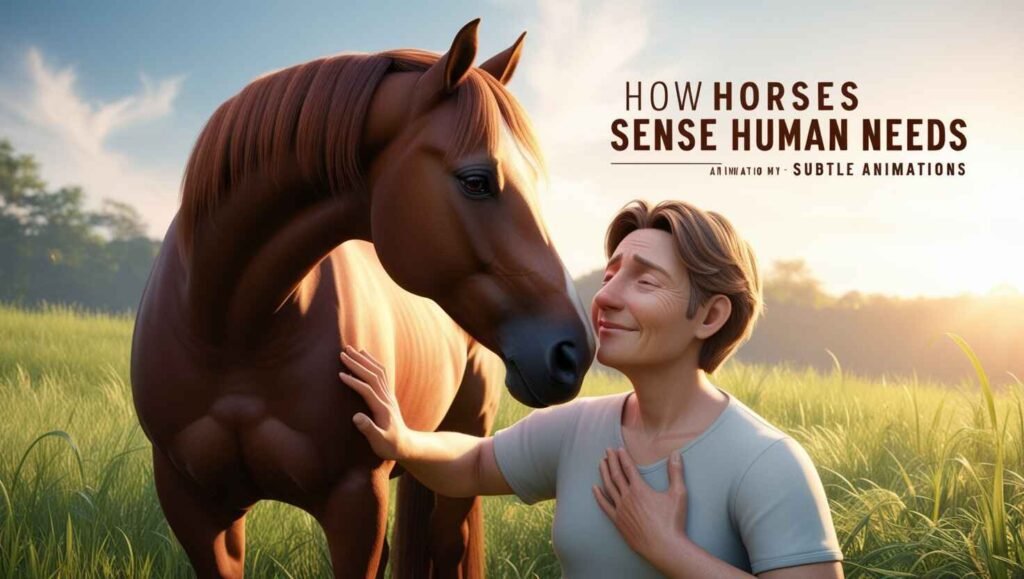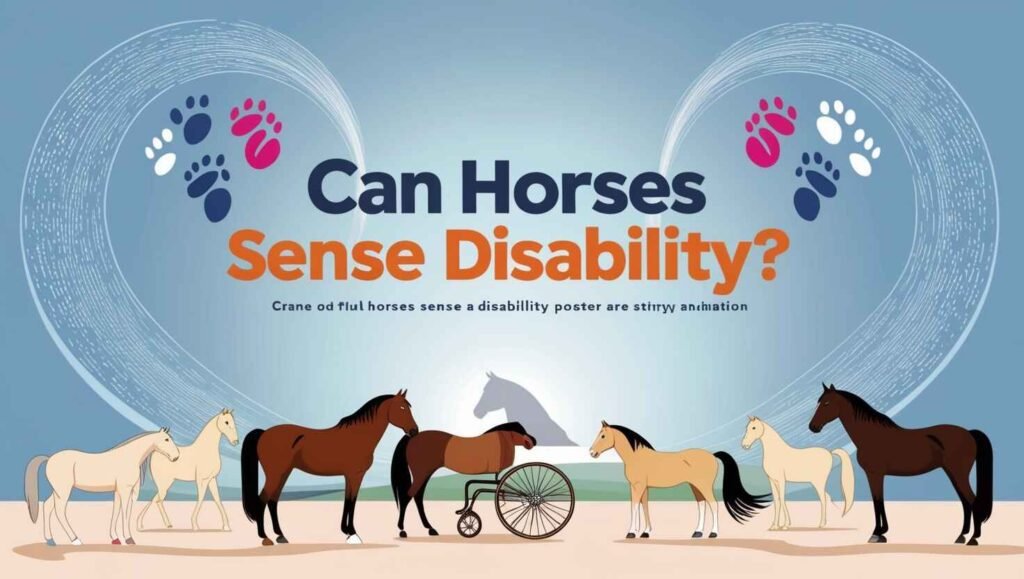Horses are often celebrated for their intelligence, beauty, and power, but there’s another trait that makes them exceptional: their sensitivity. Horses have a remarkable ability to connect with humans on a deep level, often tuning in to subtle cues and emotional shifts in ways that other animals may not. This sensitivity raises a fascinating question: can horses sense disabilities in individuals? Observations from therapeutic riding programs and equine therapy sessions suggest that horses do, in fact, respond differently to people with disabilities, often adapting their behavior to meet the needs of each individual.
This article dives into how horses interact with individuals with disabilities, the signs of their unique sensitivity, and how these interactions provide profound physical and emotional benefits for those involved.
Do Horses Sense Disability?
Horses are prey animals, which means they have highly developed instincts for detecting subtle changes in their environment and the creatures around them. This acute awareness helps them notice slight changes in human posture, energy, movement, and even mood. These perceptive abilities have led to the belief that horses can indeed sense when an individual has a disability, whether it is a physical, cognitive, or emotional condition. Horses may not comprehend “disability” in the way humans do, but they seem able to sense differences and respond in a way that is calm, patient, and even nurturing.
In therapeutic riding and equine-assisted activities, many individuals have observed horses adapting their responses when working with people with disabilities, suggesting a natural ability to “read” and respond to their needs. This unique connection allows horses to become trusted partners in therapeutic settings, offering an experience that’s safe, supportive, and empowering.
How Horses Respond to Disabilities:
When interacting with individuals with disabilities, horses often adjust their behavior in ways that reflect a heightened level of gentleness and patience. Here are some common responses horses display in therapeutic settings:

- Gentle Movement: Horses tend to walk at a steady, calm pace around individuals who may need extra support. They are less likely to make sudden movements, which helps create a safe environment and allows riders to feel more at ease.
- Stillness During Mounting: For those who require assistance getting onto the horse, horses often stand very still, accommodating the time and care needed for the rider to mount comfortably and securely.
- Calm Body Language: Horses frequently lower their heads when approaching someone in a wheelchair or with mobility aids. This positioning reduces their height and presents a calming presence, helping individuals feel more comfortable and less intimidated by the horse’s size.
These behaviors indicate that horses are naturally equipped to offer a gentle, supportive experience tailored to the unique needs of each person, particularly those who may have physical limitations or sensory sensitivities.
How Horses Detect Physical and Emotional Cues
Horses are experts at reading body language and non-verbal cues, which is how they communicate within their own herds. They can detect changes in a person’s posture, balance, and even muscle tension, which may signal that the person has different physical abilities. For example, a person in a wheelchair or using a walker may move differently, and horses seem to recognize this, approaching them more slowly or lowering their heads to create a more welcoming interaction.
Horses also pick up on emotional cues. They can sense if someone is anxious, calm, or even sad, likely due to their keen awareness of heart rates, breathing patterns, and overall energy. This sensitivity makes horses particularly valuable in equine-assisted therapy, where their responses can help therapists assess and adjust the environment to better support the individual.
How Horses Sense Human Needs
Horses are known for their intuition and empathetic nature, often described as animals that can “mirror” human emotions. This trait is particularly noticeable in therapeutic environments, where horses often adapt their behavior to align with the emotional state of the individual they are interacting with. When interacting with someone who is anxious or has limited mobility, a horse may naturally slow down or pause, showing an almost instinctive understanding of the individual’s needs.
In therapeutic riding sessions, horses often display behaviors such as:

- Pausing or Slowing: Horses may naturally slow their pace or pause when near someone who may benefit from a gentler experience, such as a child with limited mobility or an individual with a cognitive disability.
- Offering Non-Judgmental Companionship: Horses are accepting and non-judgmental by nature, which helps reduce stress for those who may feel vulnerable or self-conscious about their condition. This calming presence can foster a sense of trust and comfort that is invaluable in therapeutic settings.
Through these responses, horses provide emotional support that goes beyond traditional therapy methods, creating a bond based on understanding and respect.
Building Trust Between Horses & Individuals with Disabilities
One of the most powerful aspects of therapeutic riding is the trust that develops between horses and individuals with disabilities. Over time, horses can recognize their riders’ specific needs and make subtle adjustments to enhance comfort and stability. This process of bonding and building trust is not only empowering but can also increase confidence in individuals who may struggle with self-esteem or independence.
Therapeutic riding programs leverage this unique bond, helping participants experience physical freedom through horseback riding while also gaining emotional benefits, such as increased resilience and a sense of accomplishment. As individuals build their riding skills, the sense of partnership they develop with the horse helps reinforce feelings of capability, belonging, and self-worth.
Conclusion
Horses’ unique sensitivity, patience, and empathy make them exceptional partners for individuals with disabilities. Their ability to sense subtle cues in human behavior and respond in a gentle, reassuring way allows them to connect on a profound level, providing both physical and emotional support. The bond formed between horses and people with disabilities is transformative, offering a type of healing and empowerment that extends beyond traditional therapeutic methods.
Offering Non-Judgmental CompanionshipWhether through therapeutic riding programs or simply spending time with these intuitive animals, the relationship between horses and individuals with disabilities holds an unparalleled potential for healing, trust, and personal growth. This special connection truly enriches the lives of all who experience it.
If you have personal stories or insights on this topic and would like to share them, write for us and contribute to our growing community of equine enthusiasts and advocates.
FAQs
Can horses sense disabilities in people?
Yes, horses often show gentleness and patience around individuals with disabilities, likely sensing physical and emotional differences through body language and energy cues.
How do horses support individuals with disabilities?
Horses improve physical abilities like balance and muscle tone while boosting confidence, reducing anxiety, and promoting emotional connection.
Why are horses effective in therapy?
Horses create a safe, supportive environment that enhances both physical therapy and emotional well-being, making therapeutic activities more comforting and empowering.

